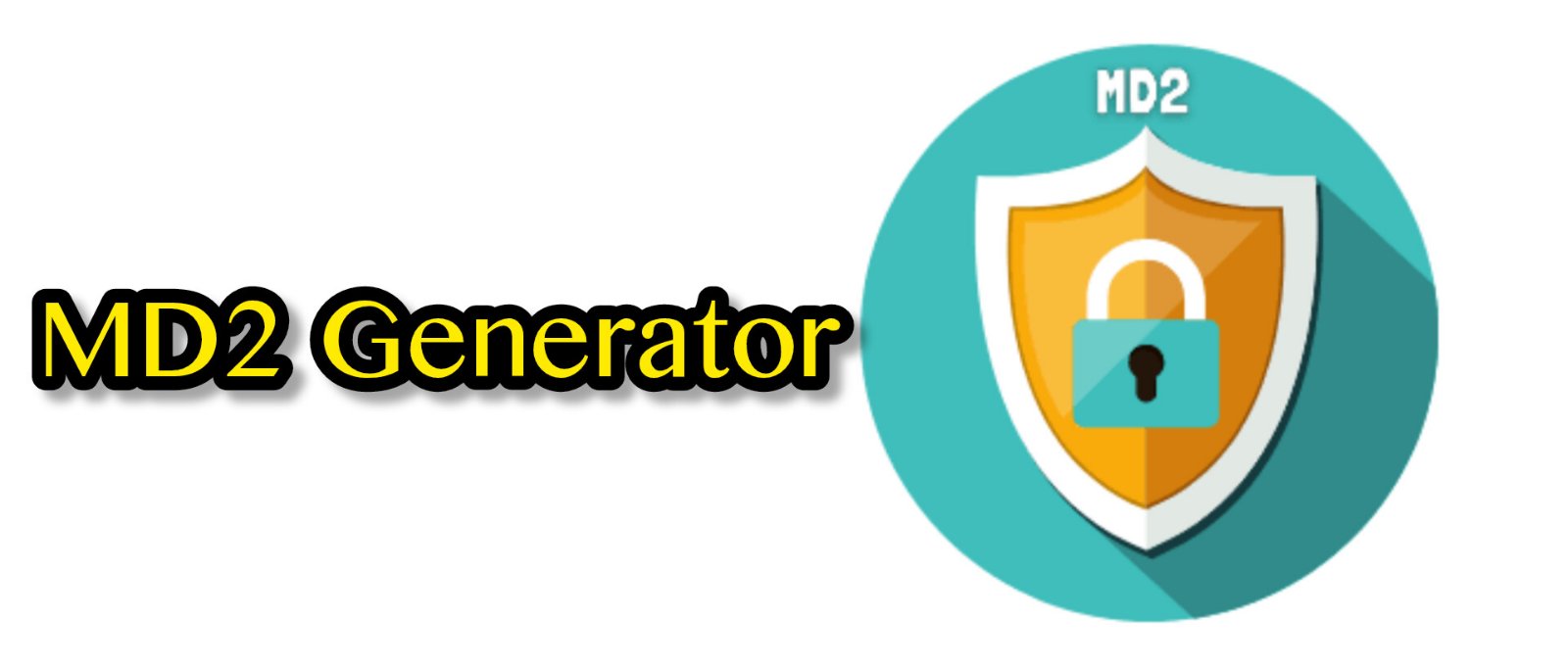
Understanding MD2 Generator: Legacy Hashing Function Explained
Created on 2 October, 2025 • Generator Tools • 20 views • 2 minutes read
An MD2 generator represents an important step in the history of cryptography.
In the world of cryptography and data security, hashing algorithms play an important role in protecting information. While modern systems rely on advanced algorithms like SHA-256 or Bcrypt, some older algorithms still exist in certain applications. One such method is the MD2 generator, a legacy cryptographic hash function designed in the late 1980s. Although no longer recommended for modern security practices, it remains a topic of interest in learning about the evolution of hashing and encryption.
What is MD2?
MD2 (Message Digest Algorithm 2) is a cryptographic hash function created by Ronald Rivest in 1989. It was originally intended for use on 8-bit computers and designed to generate a 128-bit hash value from any given input. The purpose of MD2, like other hashing functions, was to provide a digital fingerprint of data that could be used to verify integrity.
An MD2 generator takes an input message, applies the MD2 algorithm, and produces a fixed-size hash. This hash is unique to the input, meaning that even a small change in the original data results in a completely different output.
How Does an MD2 Generator Work?
The MD2 generator follows a process of padding, checksum calculation, and block processing. Here’s a simplified explanation of how it functions:
- Input Padding – The original message is padded to ensure its length matches the required block size.
- Checksum Creation – A 16-byte checksum is added to strengthen the hash.
- Transformation Process – The message is divided into blocks, and each block is processed through a substitution table.
- Final Hash Output – The algorithm produces a 128-bit digest that represents the message.
This process makes the MD2 generator effective for creating message digests, but it is outdated compared to modern standards.
Why Was MD2 Used?
Early Cryptography Needs
During the 1980s and 1990s, MD2 was considered secure and was widely used in digital signatures and file verification systems.
Compact and Lightweight
It was optimized for older, slower hardware and provided a quick way to create digital fingerprints.
Foundation for Later Algorithms
MD2 paved the way for more advanced versions, such as MD4 and MD5, which eventually led to modern algorithms still in use today.
Limitations of MD2 Generator
While MD2 played a significant role in the history of hashing, it is no longer recommended because of several weaknesses:
- Outdated Security: Advances in computing power have made MD2 vulnerable to attacks.
- Slower Performance: Compared to modern algorithms, MD2 is inefficient.
- Collision Risks: Researchers have found ways to generate the same hash for different inputs, reducing its reliability.
Modern Alternatives to MD2
Today, secure systems no longer use MD2. Instead, they rely on stronger and more reliable hashing algorithms such as:
- SHA-256 – Widely used in blockchain, digital certificates, and data verification.
- SHA-3 – A newer standard with advanced security properties.
- Bcrypt and Argon2 – Designed specifically for password hashing and enhanced security.
Conclusion
An MD2 generator represents an important step in the history of cryptography. While once trusted for data integrity and verification, it has now been replaced by stronger, more secure algorithms. Understanding MD2 is still valuable for learning about the development of cryptographic methods and how far data security has evolved.
For anyone working with sensitive information today, it is highly recommended to avoid MD2 and instead use modern hashing techniques that provide better protection against modern threats.